A fresh wave of enthusiasm engulfs you as you sit down, armed with a cup of hot coffee and the determination to finally set your life’s goals. But as the minutes turn into hours, that blank piece of paper remains just that—blank.
Navigating the labyrinth of your aspirations and breaking them down into achievable goals seems more complex than deciphering an ancient hieroglyphic script. But hold on, have you ever considered using a goal-setting template?
There you go—the answer to your predicament, wrapped neatly in three words. It’s a roadmap, if you will, that not only helps you articulate your dreams but also shows you the path to achieving them.
Whether you’re an employee, a student, a fan of Excel or Word, or someone who absolutely cannot wrap their head around planning ahead, there’s something for everyone. And if you’re looking for sage wisdom, wait until you hear from Jon Butcher, the co-founder of Lifebook, on the art of setting goals.
What Is Goal-Setting, and Why Is It Important?
Goal-setting is the art of identifying your desires and crafting a journey that helps you achieve them. It’s that magic tool that takes your vague life goals—your “someday I will” dreams—and transforms them into a concrete roadmap.
A goal is something you’ve decided you want and you’re willing to work toward.
— Jon Butcher, trainer of Mindvalley’s Lifebook Online Quest
Why is it important, you ask? As Jon, who’s also the trainer of Mindvalley’s Lifebook Online Quest, says, “You simply can’t achieve your life vision without learning how to set and accomplish goals successfully.”
Look at it this way: Imagine you’re a ship in the vast ocean of life. Without a destination, you’re simply drifting. And you’re at the mercy of the currents and winds, likely to get stuck in the middle of nowhere.
Simply put, think of goal-setting as your personal GPS, guiding you to your desired destination. It provides a sense of direction, ensuring you’re not running around in circles.
Using a template can simplify the process, especially when you’re feeling stuck in life.
What are the four types of goals?
So you’re ready to set your goals, but you find yourself a bit flummoxed about where to start. Don’t worry—this isn’t about making the perfect choice; it’s about making the right one for you.
But to navigate the journey, you need to understand your roadmap—the four main types of goals.
- Outcome goals. These are your long-term goals. If you add a specific timeframe to it, it becomes a time-based goal, like losing 20 pounds in three months or publishing your first novel by the time you’re 40.
- Performance goals. Consider these specific targets you aim to hit along your journey. For example, mastering a certain skill or running a half marathon in under two hours.
- Process goals. These are the daily tasks and habits that’ll help you reach your milestones, such as practicing coding every day or running five miles each morning.
- Self-improvement goals. These goals are about improving yourself in some way. It could be through daily meditation to reduce stress or reading a book a week to expand your knowledge.
You may also have run into quantitative vs. qualitative goals. The former is a subset of outcome or performance goals; “quantitative” means that the goal can be measured numerically. The latter is similar to process or self-improvement goals, but the focus is more on the journey or behavior change.
Keep in mind that different categorizations can be helpful in different contexts; there’s no one “correct” way to categorize goals. It often depends on the specific situation and the nature of the goal.
Key Elements of a Goal-Setting Template
Life can sometimes be like a cluttered drawer filled with scribbled notes of forgotten dreams and crumpled papers of unfulfilled ambitions. There is a beacon of clarity, though, and it’s called a goal-setting template.
But where do you start? What should be on it? Here are some essential elements you should be aware of:
- Simplicity. Your objectives and actions should be clearly defined. Use simple a goal-setting template in Excel, Word, or any other tool. Regularly review and tweak your template to ensure it’s guiding you toward your next steps effectively.
- Deadlines. Goals can be long-term, and their deadlines might be “TBD” or subject to change. However, your smaller objectives should have clear deadlines. Pro-tip: Connect these deadlines to your online calendar for a gentle nudge when action is needed.
- Most Important Goal (MIG). Your goal-setting template should have a clear hierarchical structure, with your MIG at the top. Decide what works best for you—a pyramid, rows, columns—and rank your sub-goals accordingly.
- Scores. There’s no right or wrong way to track progress, but scoring can help quantify your success. Use a scale of 1 to 10, percentages, or create your own system. Be flexible and adjust as needed, using lower scores as prompts to reassess and refocus.
- Motivation. What drives you to achieve your goals? Beyond scores and tasks, your template should include elements that inspire you. This might be a quote or image that fuels your determination. Don’t forget to celebrate each success; no matter how large or small, every step forward is a victory.
Creating the life you love is an adventure. It’s thrilling. It’s daunting. And it’s utterly worth it.

7 Goal-Setting Templates
A magic wand that can transform your ambitions into achievements would be wonderful to have, wouldn’t it? The thing is, the realm of goal-setting isn’t too far off from this enchanting idea.
Goals, by their very nature, are episodic, meaning they come and go. They're milestones. They’re things to be achieved. — Jon Butcher Share on X“Once you accomplish them,” Jon explains, “they get crossed off the list.”
Graduated from college, check.
Start an online business, check.
Lose 30 pounds, check.
So here’s where personal goal-setting templates enter the narrative. From students to employees, monthly to yearly goals—there’s one designed to guide every person on their quest to achieve something.
You can take a quiz to see which areas you want to focus on. And then, take a closer look at seven types of goal-setting templates to choose from.
1. Employee goal-setting template
Navigating the professional landscape requires a clear vision. So using an employee goal-setting template can help with your development from where you are now to where you want to be.
Additionally, it can also help set and track goals that are aligned with the company’s objectives. In fact, a Harvard Business Review study revealed that when employees do so, it can increase job performance by up to 56%. And that’s definitely an increase worth noting.
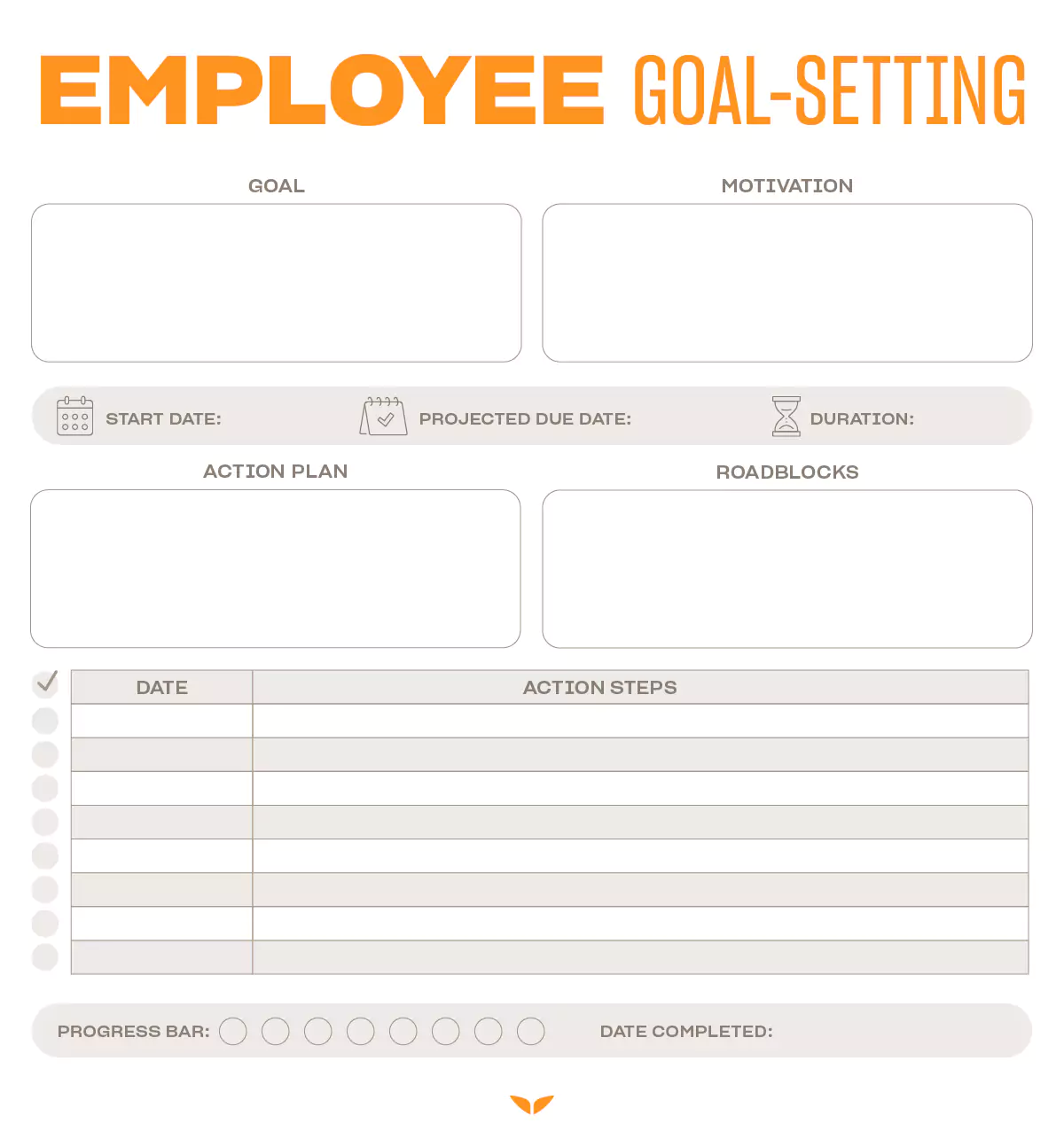
2. Student goal-setting template
Students, like sailors on an academic sea, can benefit from direction. There are several research studies that suggest the practice is associated with…
- Deeper learning across a wide range of subjects,
- Self-regulation,
- Self-efficacy,
- Cognitive engagement, and
- Higher intrinsic motivation.
So not only can the student goal-setting template help academically, but personally as well.
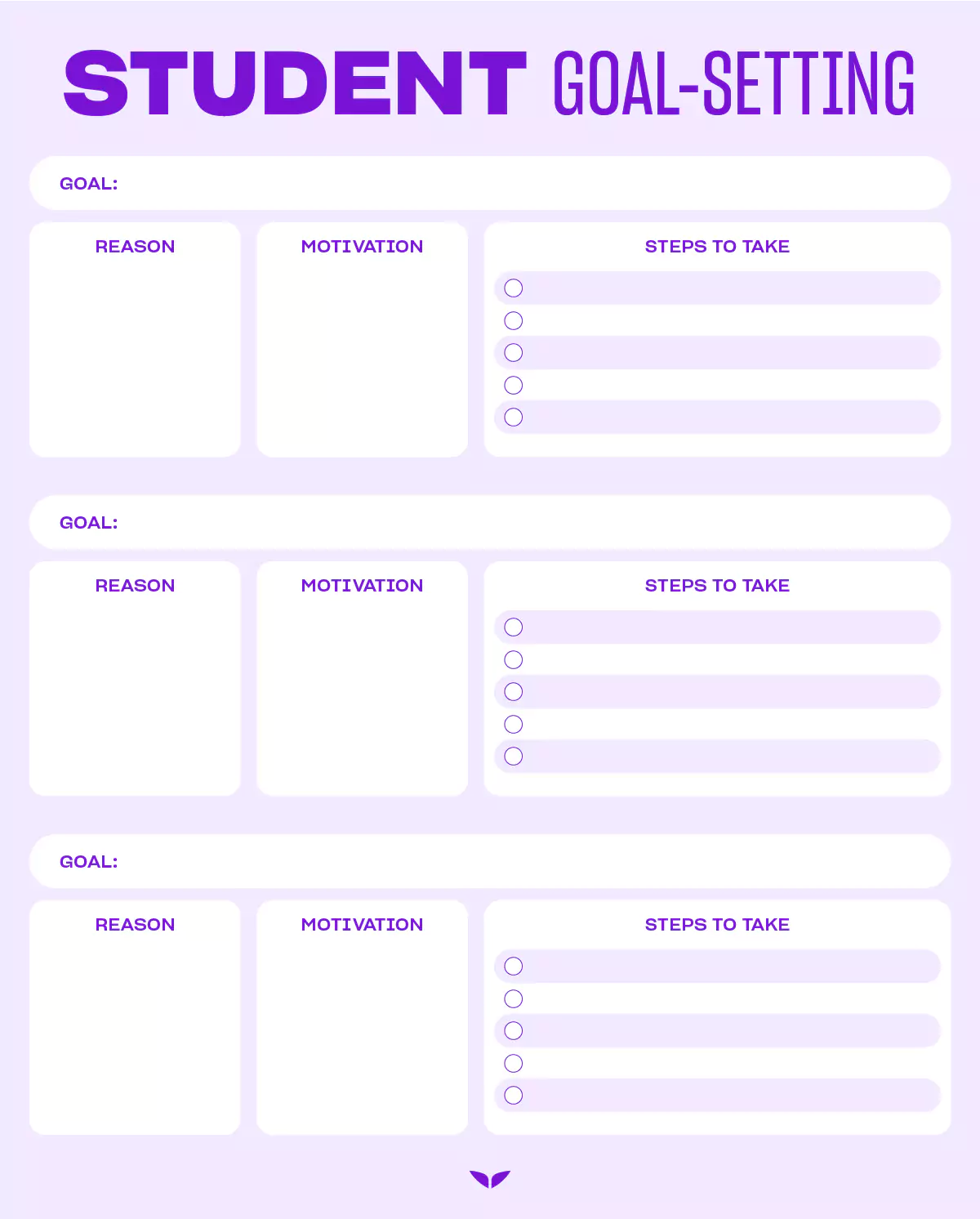
3. Excel goal-setting template
Goal setting is effective when there’s a systematic way to track progress, like a goal chart. After all, how do you know how far you’ve come if you don’t have a way to look back at where you started?
In fact, according to research from the American Psychological Association, the more you keep an eye on how you’re doing with your goals, the better your chances of achieving them. And so, keeping tabs with a goal-setting template in Excel can do just that.
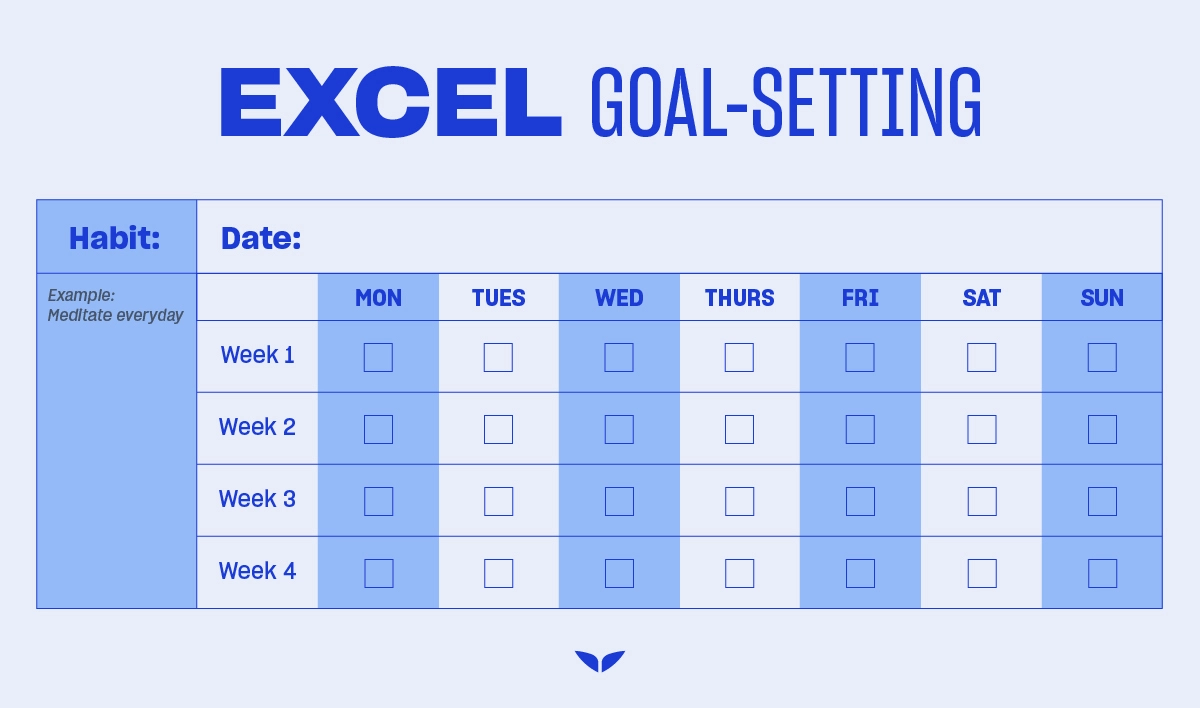
4. Word goal-setting template
Not everyone is an Excel whiz or wants to download yet another app on their phone. So for those who prefer something simple, a goal-setting template in Word offers just that.
Its flexible framework makes goal-outlining a breeze. It’s straightforward and effective, and it’s definitely an option for those looking for no fuss.
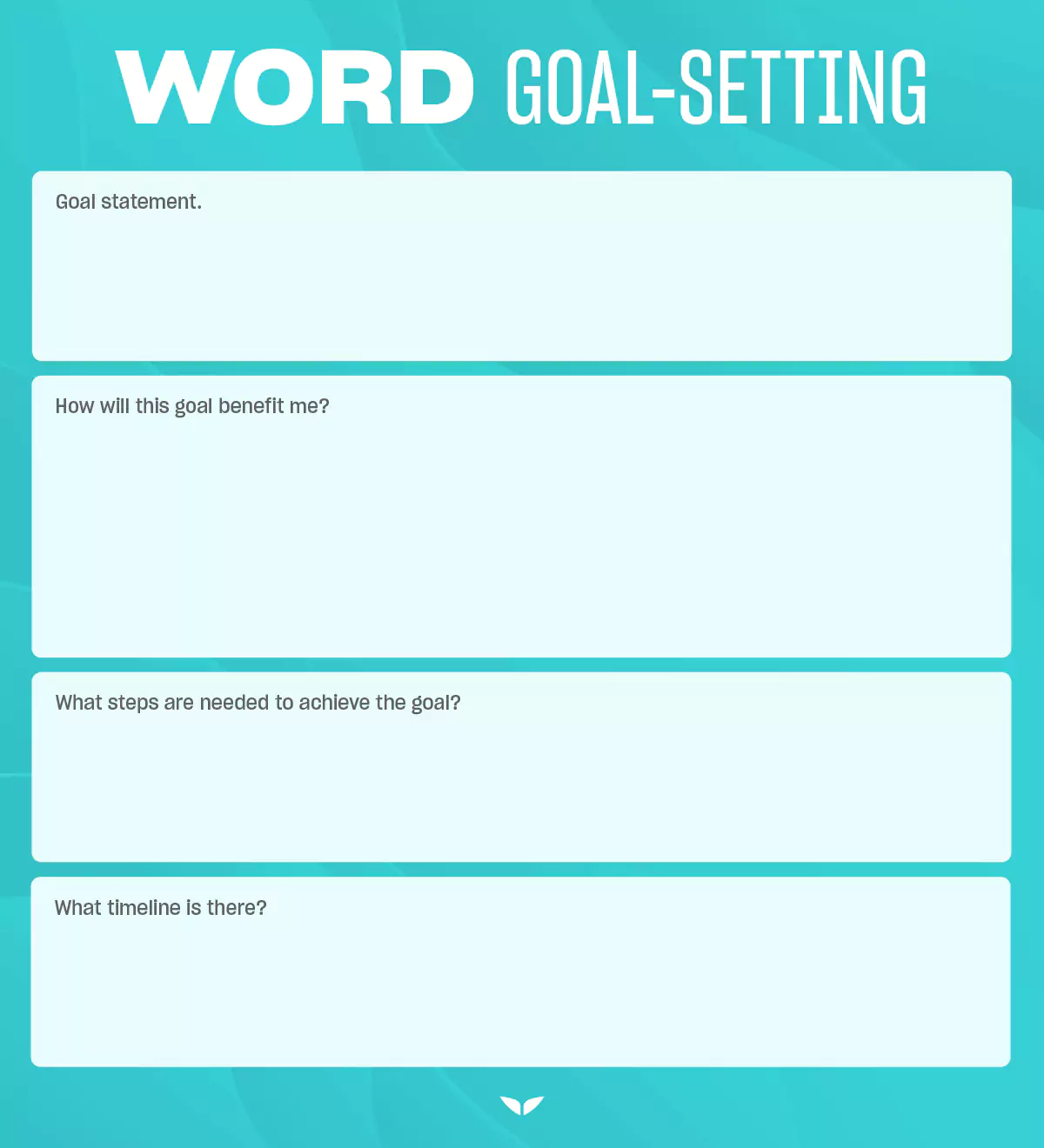
5. SMART goal-setting template
SMART isn’t about being smart; it’s an acronym that stands for specific, measurable, achievable, relevant, and time-bound. Here’s an example of what that looks like: Instead of saying, “I want to read more,” a SMART goal would be, “I will read one book per month.”
This technique transforms vague aspirations into clear, attainable goals. What’s more, research by Dominican University found that participants using this strategy were 33% more successful in their endeavors.
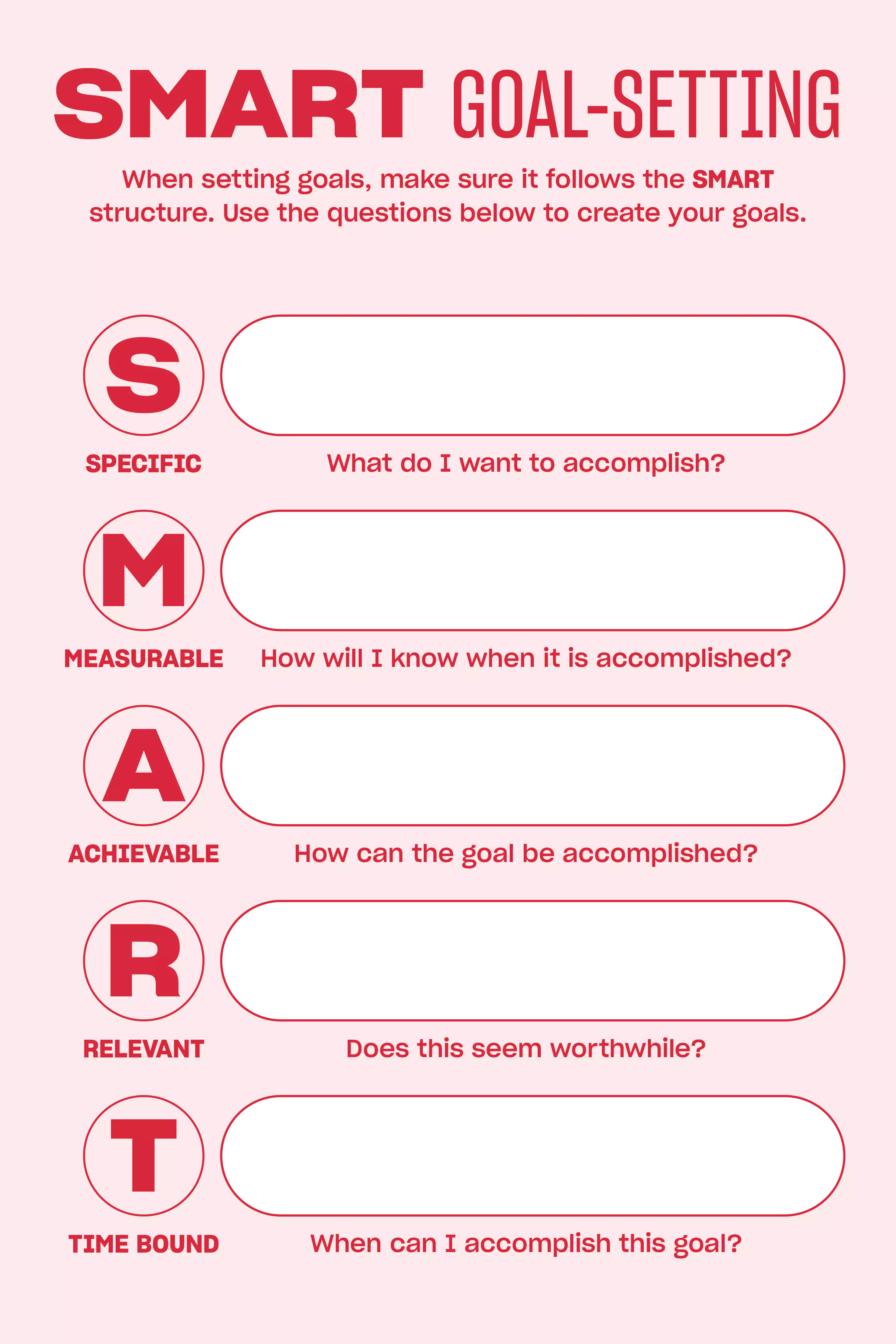
6. Monthly goal-setting template
Setting goals on a monthly basis can transform seemingly enormous targets into manageable bites.
Say, for example, you have the dream of moving out of your parents’ basement and buying a property of your own. Monthly goal setting lets you chip away at this long-term goal by setting tangible, monthly targets to get there.
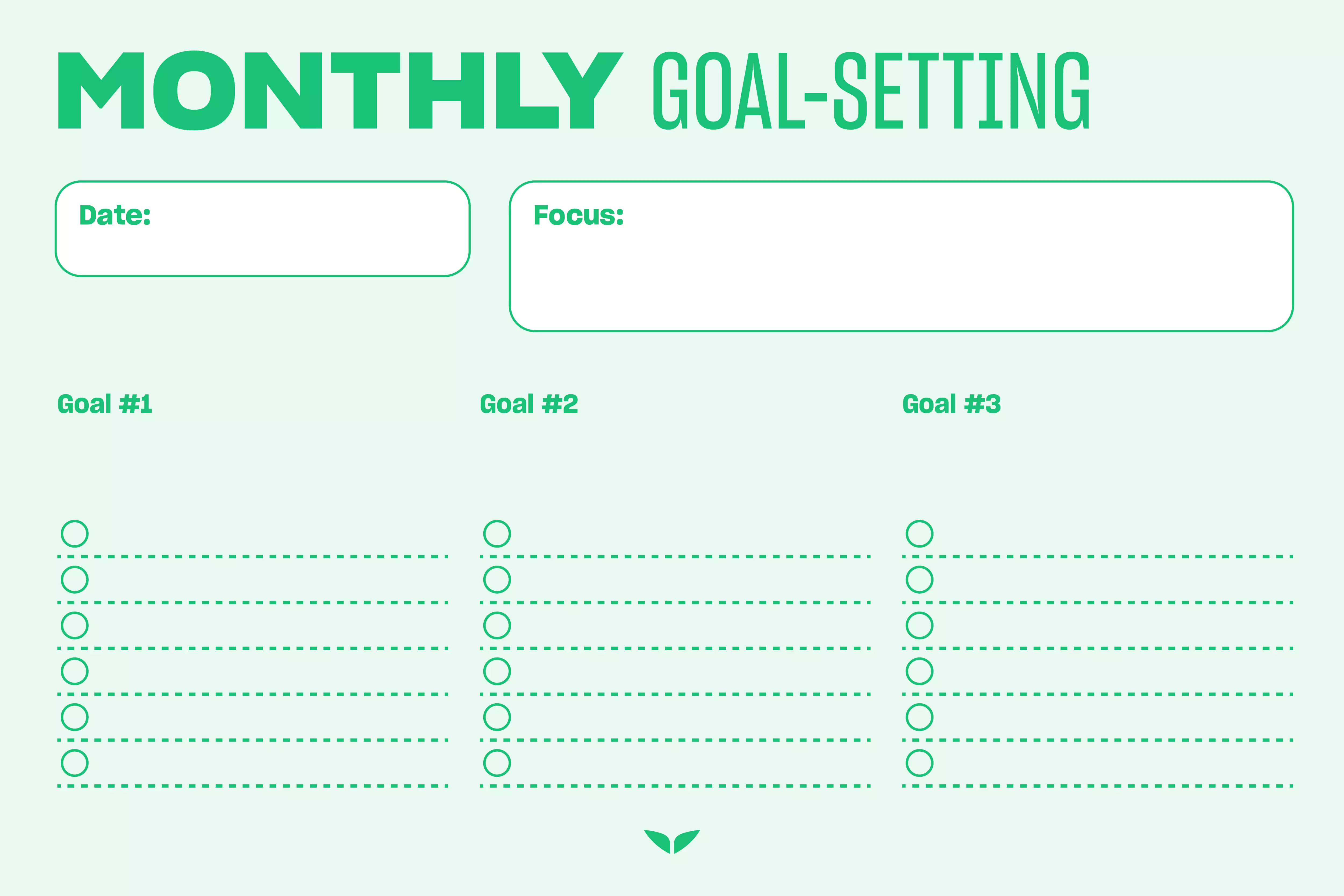
7. Yearly goal-setting template
Yearly goal setting is best when you have big dreams that may take more time than a few months to achieve.
In the instance of your career, it could be getting a promotion. Or when it comes to family, it could be taking a month-long vacation at Disneyland. Or if it’s a personal goal, it could be running a marathon.
You can use a vision board or simply write a list. But the bottom line is, setting a yearly goal can give you a clear idea of the destination you want to get to.
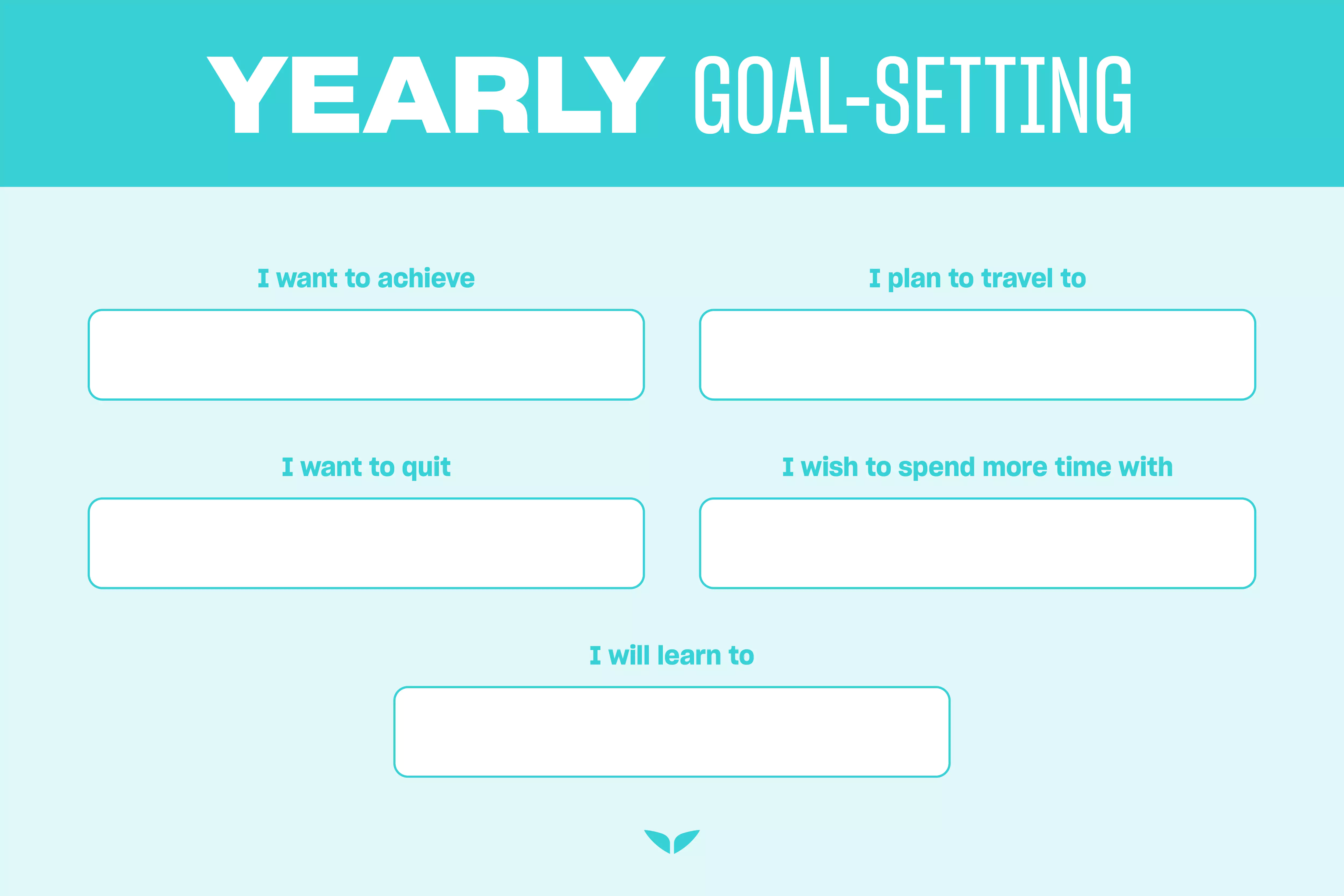
How to Set Goals, According to Lifebook Founder
Traditional goal setting often feels like exploring without a map, wandering from one goal to the next, only to find they lead you in conflicting directions. You aim for career growth, but it might clash with your family life or contradict your fitness goals. It’s like trying to climb multiple mountains at the same time.
Enter Lifebook, the compass to guide your journey. It’s not just a goal-setting template; it’s more of a comprehensive “life goals” template.
“When you have a crystal clear vision for the life that you want to be living, where you know exactly where you’re taking your entire life, [and] the person you want to become in the life that you want to live, then all of your goals are aligned,” says Jon. “They’re all directed at the same target.”
Instead of randomly setting what you want to achieve, it offers a more integrated approach, aligning all your objectives towards one grand vision. Think of it as your personal map, outlining the journey to your desired destination.
The 12 categories of life
As opposed to traditional goal setting, which only focuses on one thing at a time, Lifebook focuses on 12 key categories. Each of them represents a critical aspect of your journey:
- Health & Fitness: These goals ensure you have the stamina and vitality to enjoy all life has to offer.
- Intellectual Life: This category nurtures your mind, fostering continuous learning and intellectual growth.
- Emotional Life: These goals focus on achieving emotional well-being, setting the tone for a joyful journey.
- Character: Character goals define the person you aspire to be on your life journey.
- Spiritual Life: These goals add depth to your journey by nurturing your inner spirit and connection to the Universe.
- Love Life: Love life goals focus on cultivating and maintaining a loving, fulfilling relationship.
- Parenting: Parenting goals are about your relationship with your children, outlining your journey as a guide and mentor for them.
- Social Life: These goals focus on enhancing your network of friendships and creating a supportive community for your journey.
- Financial: This category is about securing your financial future to support your chosen lifestyle.
- Career: Career goals map out your professional path and achievements.
- Quality of Life: These goals focus on enriching your daily living experiences, and ensuring a good balance of work, leisure, and personal time.
- Life Vision: This is your personal mission statement, your ultimate destination. It’s the guiding star that aligns all your other goals.
With Lifebook, every goal is a step on the journey toward the life you desire. Each goal fits together like pieces of a puzzle, creating a holistic picture of the life you’re trekking toward.
Setting your goals in each life category
Navigating the 12 Lifebook categories is like piecing together an intricate puzzle, with each piece reflecting a unique facet of your life.
And what connects these pieces? A set of questions that guide you to paint the most vivid and authentic picture of your envisioned life:
- “What do you believe?” This question isn’t about society’s beliefs or even those of your family or friends. It’s about digging deep and uncovering your personal truth in each category.
- “What do you want?” This is your chance to dream big and visualize the best possible version of yourself in that specific area of life.
- “Why do you want that?” Understanding your “why” can be the fuel that propels you toward your vision. This question uncovers your motivations and makes them crystal clear.
- “What can you do to achieve it?” This is where the rubber meets the road. What actionable steps will you take to make your vision a reality?
Answering these questions for each category gives you a multidimensional view of your life, illuminating paths that you might not have seen before. It’s like swapping a monochrome map for a vibrant, 3D model of your journey.
As you chart your course through each category, your life starts to take on a fresh vibrancy, almost like technicolor transforming a black-and-white film. You’re not just setting goals. You’re architecting an authentic life of fulfillment and joy that reflects the truest version of you.
Life by Design, Not by Default
There are a multitude of ways to chart your course—from daily to yearly goal-setting to setting goals in 12 key categories of your life.
But if you’re looking for a comprehensive, all-encompassing map, Jon and Missy Butcher’s Lifebook might just be the guide you need.
More than just a goal-setting template, it’s an invitation to design your life rather than default to whatever comes your way.
But covering 12 aspects of your life might sound daunting, especially when goal setting itself sounds like a lot. So take baby steps.
The first one is Mindvalley’s free, 90-minute Lifebook Online Masterclass. You’ll find the wisdom, life hacks, and models of reality that’ll help you kickstart the process of masterfully designing your dream life like it has done for other Mindvalley members.
Thanks to my Lifebook, I now know I am ready to control what I really want in all areas of my life. I clearly understand the importance of recognizing all areas and knowing they all need to align towards one goal.
Moving forward, it is so easy to make decisions, always knowing they are all going towards one goal alone.
— Chantal Bingham, creative communicator @ Pura Vida TV
Remember, it’s your journey. And Lifebook is your step onto the path of creating an extraordinary life.
Welcome in.









